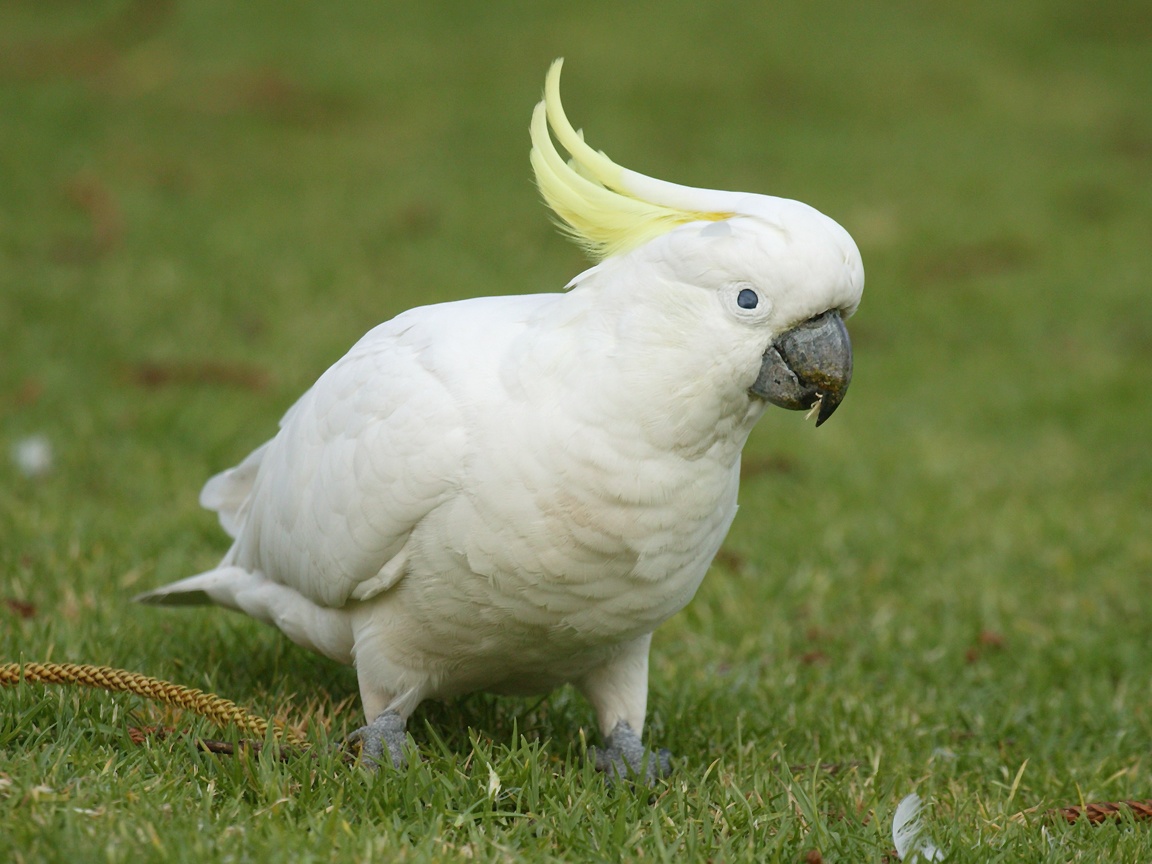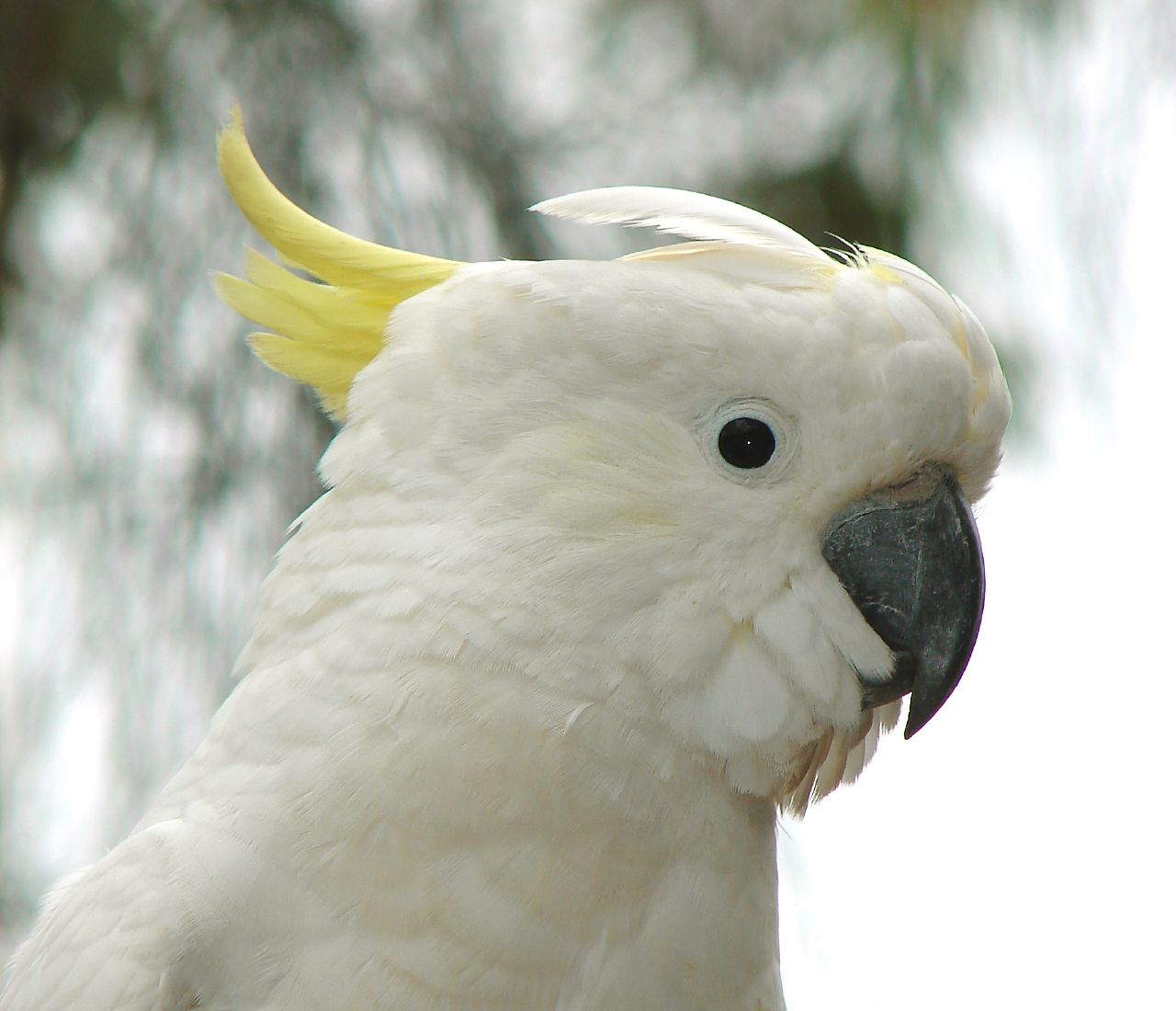Sulphur-Crested Cockatoo Biography
The Sulphur-crested Cockatoo is a large white parrot. It has a dark grey-black bill, a distinctive sulphur-yellow crest and a yellow wash on the underside of the wings. Sexes are similar, although the female can be separated at close range by its red-brown eye (darker brown in the male). This is a noisy and conspicuous cockatoo, both at rest and in flight. Young Sulphur-crested Cockatoos resemble the adults.








The Sulphur-crested Cockatoo is a large white parrot. It has a dark grey-black bill, a distinctive sulphur-yellow crest and a yellow wash on the underside of the wings. Sexes are similar, although the female can be separated at close range by its red-brown eye (darker brown in the male). This is a noisy and conspicuous cockatoo, both at rest and in flight. Young Sulphur-crested Cockatoos resemble the adults.
The raucous screech of the Sulphur-crested Cockatoo can be heard in many parts of eastern and northern Australia
The Sulphur-crested Cockatoo is similar in appearance to the three species of corella found in Australia
The Sulphur-crested Cockatoo's range extends throughout the northern and eastern mainland, and Tasmania Perth , Western Australia New Guinea and the Aru Islands, and has been introduced into New Zealand and Indonesia
Sulphur-crested Cockatoos are found in a variety of timbered habitats and are common around human settlements. The birds stay in the same area all year round.
The Sulphur-crested Cockatoo's normal diet consists of berries, seeds, nuts and roots. It also takes handouts from humans. Feeding normally takes place in small to large groups, with one or more members of the group watching for danger from a nearby perch. When not feeding, birds will bite off smaller branches and leaves from trees. These items are not eaten, however. The activity may help to keep the bill trimmed and from growing too large.
The eggs are laid in a suitable tree hollow, which is prepared by both sexes. Both birds also incubate and care for the chicks. The chicks remain with the parents all year round and family groups will stay together indefinitely.
Sulphur-Crested Cockatoo

Sulphur-Crested Cockatoo

Sulphur-Crested Cockatoo

Sulphur-Crested Cockatoo

Sulphur-Crested Cockatoo

Sulphur-Crested Cockatoo

Sulphur-Crested Cockatoo

Sulphur-Crested Cockatoo

Sulphur-Crested Cockatoo
Greater Sulphur-Crested Cockatoo in Sydney
Sulphur-Crested Cockatoo Attack
No comments:
Post a Comment